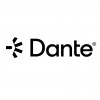 Audinate
AudinateDante
How does Dante handle redundancy and failover in a network?
How does Dante handle redundancy and failover in a network?
 Audinate
AudinateHow does Dante handle redundancy and failover in a network?
To handle redundancy and failover, Dante uses a combination of software and hardware technologies to ensure reliable audio delivery even in the event of network outages or other issues.
One key component of Dante's approach to redundancy and failover is the use of multiple network interfaces on each device. This allows audio to continue flowing even if one network connection fails, as the data can be redirected to the other available interface.
Dante also uses dynamic device discovery and automatic device reconfiguration to quickly identify changes in the network and adjust accordingly. For example, if a Dante device goes offline, the network will automatically detect the change and route audio around the missing device to ensure that the audio stream is not interrupted.
Additionally, Dante supports redundant network topologies, such as ring and mesh, which provide multiple paths for audio data to flow, ensuring that audio can continue to be transmitted even if one part of the network goes down.
You know a better answer?
The question about Audinate Dante has already been answered, but there may be a better solution or alternative available by now. If you know it, answer the question now and increase your reputation as an industry expert in our B2B community.
 Related Questions
Related QuestionsIs it possible to connect several devices with different clocks?
Two audio mixers with different clocks and different power frequency (220 VAC 50Hz and 110 VAC 60Hz) may to produce audio disturbs via Dante network?
Dante Via hidden Destination/Application error?
Hi there! Currently Learning Dante Via for a project I'm doing and when looking for the first time. I right clicked and hid an application...
Where does noise come from on the Dante network?
Hello, I am receiving 30 channels with an iMac via the network card and Virtual Soundcard that I want to record in Pro Tools. Everything...
More from the Protocols & Standards section
Was the content helpful to you?